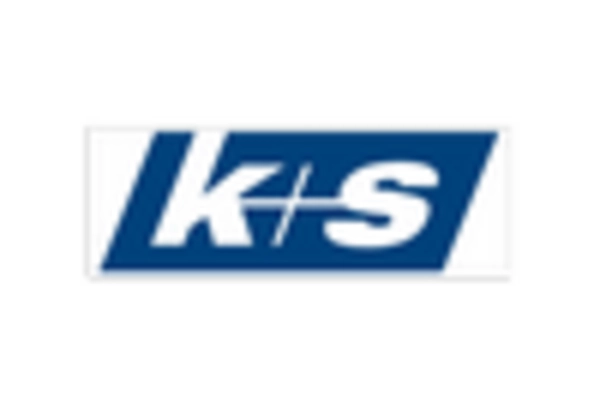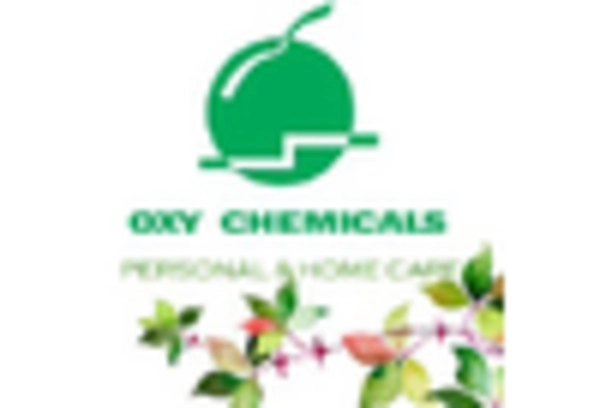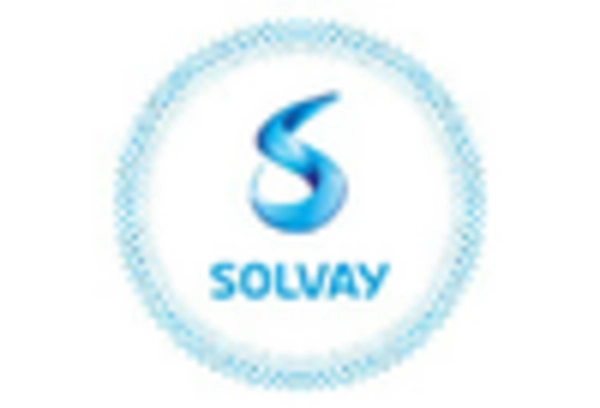Growth in Oil and Gas Sector
The Calcium Chloride Market is significantly impacted by the growth in the oil and gas sector. Calcium chloride is employed in drilling fluids to enhance the efficiency of oil extraction processes. As energy demands continue to rise, the oil and gas industry is expanding, leading to increased utilization of calcium chloride in various applications, including well completion and workover operations. Recent statistics indicate that the oil and gas sector is projected to grow at a compound annual growth rate of 5.2% over the next few years, which is likely to bolster the calcium chloride market. The compound's ability to control fluid density and prevent hydrate formation makes it indispensable in this sector, thereby reinforcing its critical role in the Calcium Chloride Market.
Rising Use in Food Preservation
The Calcium Chloride Market is witnessing a rising trend in the use of calcium chloride for food preservation. This compound serves as a firming agent in canned vegetables and fruits, enhancing texture and prolonging shelf life. As consumer preferences shift towards processed and preserved foods, the demand for calcium chloride in the food industry is likely to increase. Market analysis indicates that the food preservation segment is expected to grow at a rate of 3% annually, driven by the increasing consumption of convenience foods. Moreover, the regulatory approval of calcium chloride as a food additive in various regions further solidifies its position in the market. This trend highlights the multifaceted applications of calcium chloride, reinforcing its importance in the Calcium Chloride Market.
Expansion in Construction Sector
The Calcium Chloride Market is significantly influenced by the expansion of the construction sector. Calcium chloride is utilized as a concrete accelerator, enhancing the curing process and improving the strength of concrete. As urbanization continues to rise, the demand for construction materials and additives, including calcium chloride, is expected to increase. Recent data suggests that the construction industry is projected to grow at a compound annual growth rate of 4.5% over the next five years, which bodes well for the calcium chloride market. Additionally, the growing trend of infrastructure development in emerging economies further supports this expansion. The versatility of calcium chloride in various construction applications, such as dust control and moisture absorption, positions it as a critical component in the Calcium Chloride Market.
Increasing Demand in De-icing Applications
The Calcium Chloride Market experiences a notable surge in demand due to its widespread use in de-icing applications. As winter weather conditions become more severe, municipalities and road maintenance agencies increasingly rely on calcium chloride for effective ice control. This compound is favored for its ability to lower the freezing point of water, making it an efficient solution for maintaining road safety. In recent years, the market has seen a growth rate of approximately 5% annually, driven by the need for safer transportation during winter months. Furthermore, the increasing frequency of extreme weather events has led to heightened awareness regarding road safety, further propelling the demand for calcium chloride in de-icing. This trend indicates a robust future for the Calcium Chloride Market as it aligns with public safety priorities.
Environmental Regulations Favoring Calcium Chloride
The Calcium Chloride Market is positively influenced by stringent environmental regulations that favor the use of calcium chloride over other chemical alternatives. As industries seek to comply with environmental standards, calcium chloride emerges as a more eco-friendly option for various applications, including dust control and de-icing. Regulatory bodies are increasingly promoting the use of less harmful substances, which positions calcium chloride favorably in the market. Recent trends indicate that the market for environmentally friendly de-icing agents is expected to grow by 4% annually, reflecting a shift towards sustainable practices. This regulatory landscape not only enhances the appeal of calcium chloride but also ensures its continued relevance in the Calcium Chloride Market.

















Leave a Comment